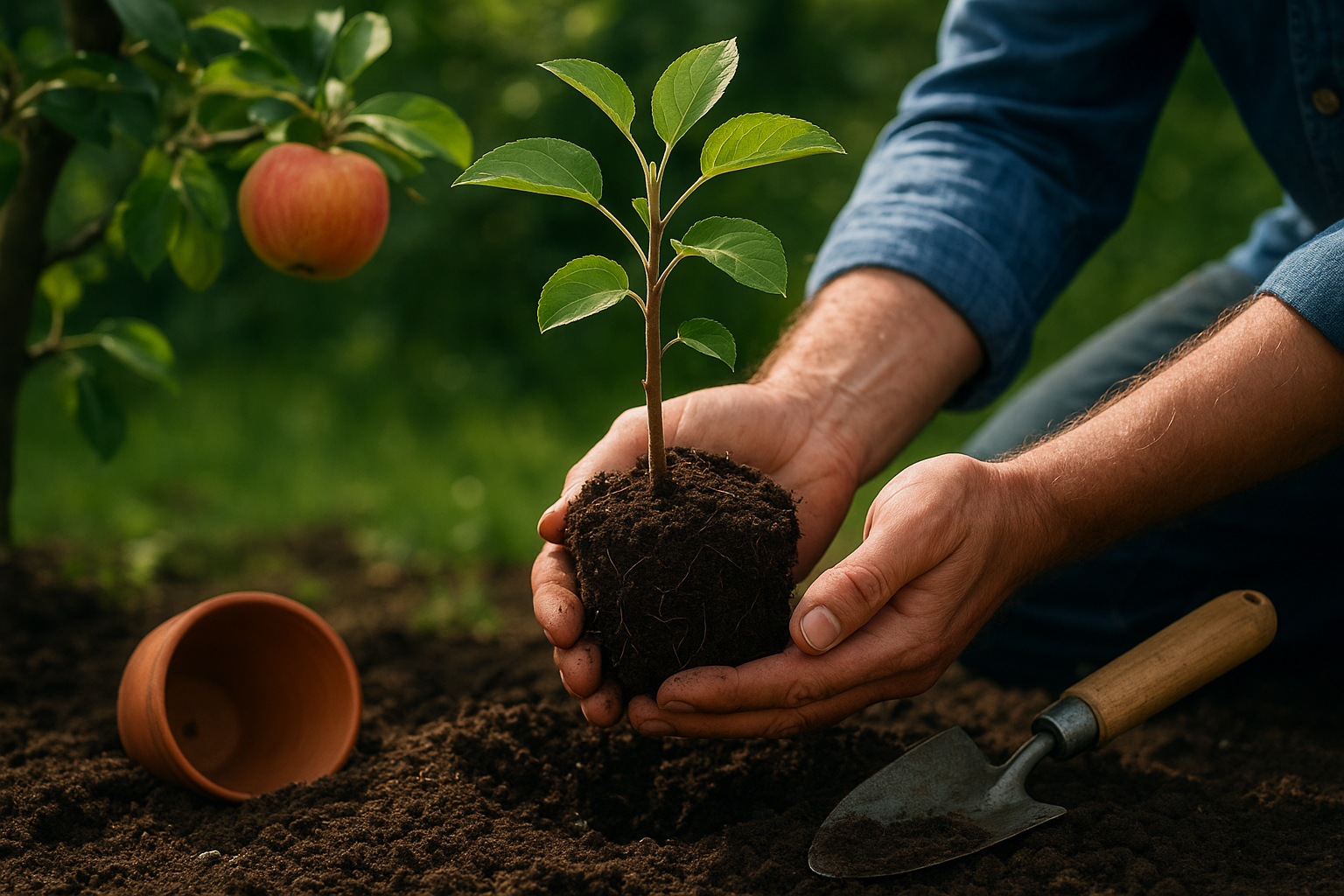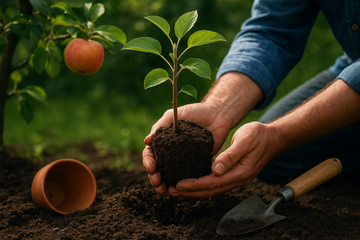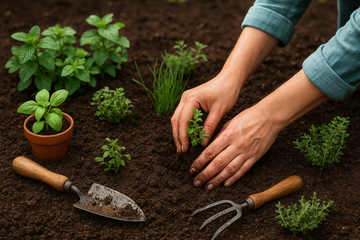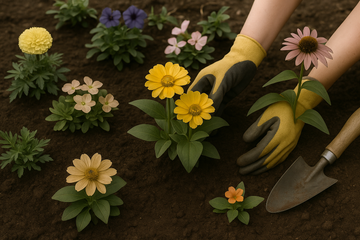Planting fruit seeds can be one of the most rewarding gardening experiences. From juicy berries to exotic tropical fruits, growing fruit from seed lets you experiment with varieties, save money, and take pride in nurturing a tree or vine from the beginning. In this post, we’ll walk you through how to sow, care for, and eventually harvest fruit-bearing plants. We’ll also point out some fruit seed options and how you can use SeedsChoice’s own product offerings to get started.
Why Grow Fruit from Seed?
Growing fruit from seed has its challenges, but also many benefits:
-
Greater variety choice — you can try rare or unusual cultivars not commonly sold as plants
-
Cost savings — seeds are usually cheaper than buying started fruit plants
-
Learning opportunity — you gain deeper understanding of propagation
-
Satisfaction — seeing your plant evolve from seed to fruiting is deeply rewarding
That said, a caveat: many fruit trees grown from seed will not produce fruit true to parent stock, especially with grafted varieties. According to Pennsylvania State University Extension, seeds of common tree fruits (apple, pear, peach, cherry) typically require a chilling (stratification) period and may yield hybrids rather than clones.
So often gardeners use seed-grown plants as rootstock or experimentals, while purchasing grafted or budded trees for reliable fruit quality. But even with that caution, planting fruit seeds remains a great way to explore nature’s diversity and possibly discover new favourites.
Getting Started: What You’ll Need
To give your fruit seeds the best chance, prepare:
-
Seed trays, pots, or cells
-
A light, well-draining seed-starting mix
-
Clean water (sprayer or fine watering can)
-
Labels / markers
-
Transparent covers or plastic wrap (for humidity)
-
Heat mat (optional, to maintain warmth)
-
Grow lights or access to a bright window
-
Potting soil or containers for transplanting
It helps to plan which fruit types you want (berries, melons, citrus, etc.) and check their germination requirements—some need soaking, scarification, or cold stratification before they sprout.
Step-by-Step: Planting Fruit Seeds
Here’s a general workflow. Adapt as needed per species.
1. Pre-treat Seeds (if needed)
-
Cold stratification: Many tree seeds (apple, pear, cherry) require a period of cold, moist storage to break dormancy.
-
Scarification / soaking: For harder seeds, gently nick or soak them to help water penetrate.
-
Drying and cleaning: If extracting from fresh fruit, remove pulp thoroughly and dry seeds before storage.
2. Prepare the Tray & Mix
-
Moisten the seed mix before filling containers
-
Fill cells/trays nearly to the top, gently press but don’t compact
-
Label each tray/row with species, date, treatment
3. Sow Seeds
-
Place seeds on surface or just under a fine layer of mix
-
Cover lightly if the species demands it (some seeds need light to germinate)
-
Mist or water gently to settle the soil
-
Cover with dome or plastic wrap to maintain humidity
4. Maintain Germination Conditions
-
Keep in a warm location (often 20–25 °C, though species differ)
-
Check daily to maintain moisture—soil should stay damp but not waterlogged
-
Remove cover when first sprouts appear
-
Provide ample light (12–16 hours) once seedlings emerge
5. Thin & Transplant
-
Once seedlings produce true leaves, thin to strongest individuals
-
Move seedlings into individual pots with richer potting mix
-
If intending to plant outdoors, harden them off gradually by exposing to outdoor conditions over several days
6. Ongoing Care
-
Watering: Even moisture, avoiding soggy soil
-
Fertilizing: Use a balanced, mild fertilizer once seedlings are established
-
Support: Some young fruit plants (vines, climbers) may benefit from stakes or trellises
-
Monitoring pests/diseases: Keep an eye on fungal issues, damping off, or pests
Popular Fruit Seeds to Try
Here are a few fruit seed ideas to inspire you:
-
Orange Pineapple Melon Seeds (Cucumis melo “Orange Pineapple”) —
A sweet, tropical melon with vibrant orange flesh and refreshing flavor. -
Kiwano Seeds (Horned Melon, Cucumis metuliferus) —
A striking spiky melon with bright green, jelly-like interior and mildly sweet taste. -
Cape Gooseberry Seeds (Physalis peruviana) —
Small golden berries with a tangy-sweet flavor, perfect for fresh eating or desserts. -
Melon Seeds (Cucumis melo ) —
Juicy green-fleshed melon known for its aromatic and refreshing sweetness. -
Melon Orange Pineapple (repeat of #1 in the Rare & Exotic Fruits list) —
Tropical orange-fleshed melon offering a rich, sweet, and fragrant fruit experience.
Tips & Best Practices for Success
Here are actionable tips to boost your success when planting fruit from seed:
-
Start with fast-growing fruits like melons and berries — they give quicker rewards
-
Use fresh seeds — older seeds often have reduced germination
-
Monitor temperature & humidity closely in germination stage
-
Label meticulously to avoid confusion among seedlings
-
Rotate trays if indoors so growth is even
-
Provide adequate drainage & avoid oversaturation
-
Harden off seedlings gradually before moving them outdoors
-
Use companion planting or mulching to maintain soil health and reduce weeds
Challenges to Anticipate
-
Unpredictable fruit quality: Seed-grown plants may not produce fruit identical to parent
-
Slow maturity: Some trees may take several years before fruiting
-
Dormancy requirements: Many fruit seeds need cold stratification, which delays germination
-
Pests & diseases: Young seedlings are vulnerable to damping off, fungal infection, insects
By planning and being patient, you can reduce these risks.
FAQ Section — Growing Fruit from Seed
Q: Do I need to stratify all fruit seeds?
A: No. Only species with seed dormancy (especially many temperate tree fruits like apple, cherry, pear) require cold stratification. Tropical seeds (e.g. melon, passionfruit) often don’t. Consult your seed packet.
Q: How long until I see fruit?
A: Depends heavily on species. Melons and berries might fruit in their first or second year; fruit trees started from seed could take 3–10 years to produce meaningful harvests.
Q: Can I sow seeds directly outdoors?
A: For many warm-climate fruits (melons, pumpkins, certain berries), direct sowing works well after all danger of frost has passed. For others, starting indoors gives better control.
Q: Will the fruit taste like the parent?
A: Not always. Especially with hybrid or grafted varieties, seed-grown plants may show variability and lose parent traits.
Q: Should I graft seedling to improve fruit quality?
A: Yes, in many traditional fruit orchards, scions from good cultivars are grafted onto seedling rootstock. If your goal is a high-quality fruit tree, grafting is a useful technique.
Q: How often should I water seedlings?
A: Keep the soil moist but not soggy. Young plants are sensitive—too much water can cause root rot or damping off.
Conclusion & Call to Action
Planting fruits from seed is a journey of patience, learning, and delight. While challenges exist, the adventure of growing watermelons, passionfruit vines, strawberries, or even experimental fruit trees from scratch brings deep satisfaction.
If you’re ready to begin, head to Fruit Seed Collection to browse varieties. Consider starting with fast-fruiting options like melons or berries to get confidence and experience. As your seedlings mature, you can expand into more challenging species.












